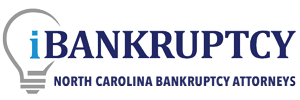Chapter 7 Bankruptcy – 3 Things To Know
Click Here For Your Free Bankruptcy Evaluation
In A Nutshell
(1) Wipe Away Unsecured Debt (i.e. Credit Cards, Medical Bills)
(2) Manage Secured Debt (i.e. Mortgage, Car Loan)
(3) Quickly Receive Your “Fresh Start”
In More Detail
(1) Wipe Away Unsecured Debt (i.e. Credit Cards, Medical Bills)
In a Chapter 7 Bankruptcy, your liability for most unsecured debts is wiped away. Unsecured debts are debts incurred via credit cards, medical bills, personal loans, and any other debt where no collateral is “securing” the loan. As long as you qualify for Chapter 7 Bankruptcy and are able to exempt all of your property (discussed in a later post), then you will not have to pay anything to your unsecured creditors. Your unsecured creditors will be forever barred from attempting to collect these debts from you in any way. No more phone calls, letters, lawsuits, etc.
(2) Manage Secured Debt (i.e. Mortgage, Car Loan)
Secured debts are those where an asset you own has been pledged as collateral “securing” the loan given by the creditor. The most common types of secured debts are mortgages, car loans, and furniture loans. Chapter 7 gives you 2 options for how to deal with your secured debts. (1) You can keep the asset used as collateral for the secured debt and continue to pay for it until it is paid in full; or (2) you can surrender the asset by giving it to the finance company and wipe away your liability for the debt. In most bankruptcy cases this will be your choice.
Chapter 7 can also assist you in paying for your secured debts. Typically secured debts are the ones that individuals care about more. You would certainly prefer to pay for your house and car rather than your credit card. Because you will wipe away your unsecured debt through a Chapter 7 and will no longer have to pay any of it back, more of your income will be freed up to pay toward your secured debt.
(3) Quickly Receive Your “Fresh Start”
Chapter 7 will give you a “fresh start” fairly quickly. Most Chapter 7 bankruptcies last between 4 and 6 months. Meaning that from the day you file bankruptcy, your debts are wiped away and your bankruptcy ends in 4 to 6 months.
Courts in the United States have often described bankruptcy as giving the individual a “fresh start”. In fact the Supreme Court described bankruptcy as:
“[I]t gives to the honest but unfortunate debtor…a new opportunity in life and a clear field for future effort, unhampered by the pressure and discouragement of preexisting debt.” Local Loan Co. v. Hunt, 292 U.S. 234, 244 (1934).
Bankruptcy allows you to put the past behind you by getting rid of certain debts you owe. While one of the consequences of filing bankruptcy is that it negatively affects your credit score, your credit slate is wiped clean, allowing you to build credit following the bankruptcy.
Bankruptcy also allows you to get some of your life back by stopping all creditors from collecting your debts from you. Collection efforts can take on several forms with the one common denominator being that they create stress for you. As soon as the bankruptcy is filed, all collection efforts must cease. You will receive a discharge of your debts at the conclusion of your bankruptcy, and these collections efforts can never restart. Creditors are forever barred from attempting to collect discharged debts from you.
